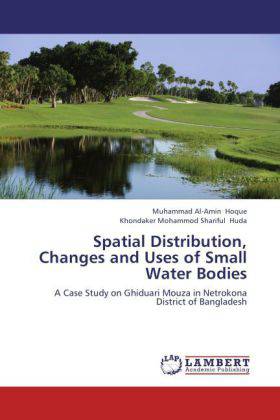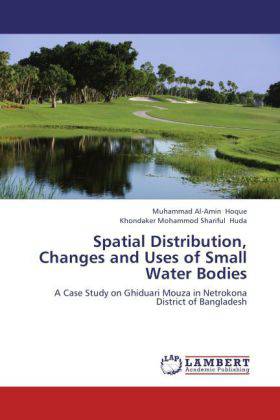
- Afhalen na 1 uur in een winkel met voorraad
- Gratis thuislevering in België vanaf € 30
- Ruim aanbod met 7 miljoen producten
- Afhalen na 1 uur in een winkel met voorraad
- Gratis thuislevering in België vanaf € 30
- Ruim aanbod met 7 miljoen producten
Zoeken
Spatial Distribution, Changes and Uses of Small Water Bodies
A Case Study on Ghiduari Mouza in Netrokona District of Bangladesh
Muhammad Al-Amin Hoque, Khondaker Mohammod Shariful Huda
Paperback | Engels
€ 72,45
+ 144 punten
Omschrijving
Small water bodies are one of the most productive ecosystems, highly significant for the sustenance and viable of human life, plants and animals. There are various types of Small water bodies such as Doba, Pond, Dighi, Khal and Beel in Bangladesh. All of these types of small water bodies are almost equally distributed all over the country, except for the beel, which is a natural, saucer shaped depression. These are commonly used for bathing and washing, fisheries and aquaculture, irrigation, cattle feeding and duck rising etc. In spite of the importance these to the local economy there is no up to date inventory. The present study is concerned with the distribution pattern of small water bodies and monitoring its characteristics. From the study it is found spatial distribution and changing pattern of small water bodies over the years and these changes have happened mostly in the recent decades. This is the appropriate time to go ahead with proper policy and plan so that the landscape capability of these are conserved and in some cases restored. This research will be more helpful to other researchers who want to study about these and also policy makers of water resources management.
Specificaties
Betrokkenen
- Auteur(s):
- Uitgeverij:
Inhoud
- Aantal bladzijden:
- 128
- Taal:
- Engels
Eigenschappen
- Productcode (EAN):
- 9783659210648
- Verschijningsdatum:
- 9/08/2012
- Uitvoering:
- Paperback
- Afmetingen:
- 152 mm x 229 mm
- Gewicht:
- 200 g

Alleen bij Standaard Boekhandel
+ 144 punten op je klantenkaart van Standaard Boekhandel
Beoordelingen
We publiceren alleen reviews die voldoen aan de voorwaarden voor reviews. Bekijk onze voorwaarden voor reviews.








